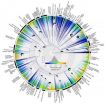(Press-News.org) Patients newly diagnosed with type 2 diabetes feel "left in the dark" and unsure what they can and can't eat whilst sometimes waiting months to receive diabetes education, according to a new study published online today in the journal Primary Health Care Research & Development (1). The research carried out by Dr Michelle McKinley and colleagues at Queen's University Belfast, explored the views of people recently diagnosed with diabetes and discovered that whilst waiting for a referral to a diabetes education programme, they received little or no information about what to eat. One patient reported that that were "eating enough to stay alive but eating very little" after being told they needed to lower their blood sugar (glucose) levels.
Dr McKinley and her team explored patient's lifestyle self-management of their diabetes and the opinions of health professionals. With type 2 diabetes being most common in older patients it was commonly reported that it was difficult "to break habits of a lifetime". This barrier to changing lifestyle is partnered with negative views of the 'new' diet, with it viewed as mundane and unappealing. An opinion that was echoed by health professionals:
"it's getting them to hear what you are saying rather than just honing on the 'life's not worth living any more' if they've gotta cut out X,Y and Z" - Dietitian
The research found that advice on physical activity was rarely focused on in the patients experience and highlights the need for health professionals working with patients with diabetes to make a conscious effort to help address this gap in their patient's knowledge.
Dr McKinley states "Patients with type 2 diabetes indicated that there was sometimes a delay between diagnosis and receiving advice about how to self-manage their diabetes. Not surprisingly, many patients felt that they were 'on their own' during this time with no idea what changes to make to their lifestyle or how to set about doing it. It is important that we try to fill this gap with easily accessible information that is specifically designed for people with type 2 diabetes."
With 2.9 million people in the UK diagnosed with diabetes (2) this research highlights the need for improved support between the point of diagnosis and the first visit with a professional for diabetes education. Easy to understand resources and support needs to be developed and made available to patients during this time in order to limit the feelings of isolation presently reported.
###
References:
1. Booth AO, Lowis C, Dean M, Hunter SJ and McKinley MC. (2012) Diet and physical activity in the self-management of type 2 diabetes: Barriers and facilitators identified by patients and health professionals. Primary Health Care Research and Development doi:10.1017/S1463423612000412 (with an embargo of 00:01 UK time (GMT) on 1st November 2012)
2. Diabetes UK http://www.diabetes.org.uk accessed 04-10-12
Patients with diabetes left in the dark
2012-11-01
ELSE PRESS RELEASES FROM THIS DATE:
Alcohol increases activity of the resting brain in social drinkers
2012-11-01
Short-term alcohol intake can increase the activity of functional connections across the human brain when it is at rest, according to research published Oct 31 in the open access journal PLOS ONE by Panagiotis Bamidis and colleagues from the Aristotle University of Thessaloniki, Greece.
Previous studies have shown that alcohol intake increases transmission of signals by the neurotransmitter GABA, present in 40% of the connections between nerve cells in the brain. Here, the researchers monitored resting brain activity in healthy social drinkers who had consumed one drink, ...
Exhaustive family tree for birds shows recent, rapid diversification
2012-11-01
New Haven, Conn. — A Yale-led scientific team has produced the most comprehensive family tree for birds to date, connecting all living bird species — nearly 10,000 in total — and revealing surprising new details about their evolutionary history and its geographic context.
Analysis of the family tree shows when and where birds diversified — and that birds' diversification rate has increased over the last 50 million years, challenging the conventional wisdom of biodiversity experts.
"It's the first time that we have — for such a large group of species and with such a ...
First ever family tree for all living birds reveals evolution and diversification
2012-11-01
The world's first family tree linking all living bids and revealing when and where they evolved and diversified since dinosaurs walked the earth has been created by scientists from the University of Sheffield.
Experts used the family tree to map out where the almost 10,000 species of birds live to show where the most diversification has taken place in the world.
Researchers, from the University of Sheffield, Yale University, University of Tasmania and Simon Fraser University, say the creation of new species has speeded-up over the last 50 million years. Surprisingly, ...
High blood pressure damages the brain in early middle age
2012-11-01
Uncontrolled high blood pressure damages the brain's structure and function as early as young middle-age, and even the brains of middle-aged people who clinically would not be considered to have hypertension have evidence of silent structural brain damage, a study led by researchers at UC Davis has found.
The investigation found accelerated brain aging among hypertensive and prehypertensive individuals in their 40s, including damage to the structural integrity of the brain's white matter and the volume of its gray matter, suggesting that vascular brain injury "develops ...
Protoplanet Vesta: Forever young?
2012-11-01
Like a movie star constantly retouching her makeup, the protoplanet Vesta is continually stirring its outermost layer and presenting a young face.
New data from NASA's Dawn mission show that a common form of weathering that affects many airless bodies like Vesta in the inner solar system, including the moon, surprisingly doesn't age the protoplanet's outermost layer.
The data also indicate that carbon-rich asteroids have been splattering dark material on Vesta's surface over a long span of the body's history.
The findings are described in two papers published ...
Assembly not required
2012-11-01
Cambridge, Mass. - October 31, 2012 - Scientists have created new kinds of particles, 1/100th the diameter of a human hair, that spontaneously assemble themselves into structures resembling molecules made from atoms. These new particles come together, or "self-assemble," to form structures in patterns that were previously impossible to make and hold promise for manufacturing advanced optical materials and ceramics.
The method, described in the latest issue of the journal Nature, was developed by a team of chemists, chemical engineers, and physicists at New York University ...
Virtual reality 'beaming' technology transforms human-animal interaction
2012-11-01
Using cutting-edge virtual reality technology, researchers have 'beamed' a person into a rat facility allowing the rat and human to interact with each other on the same scale.
Published today in PLOS ONE, the research enables the rat to interact with a rat-sized robot controlled by a human participant in a different location. At the same time, the human participant (who is in a virtual environment) interacts with a human-sized avatar that is controlled by the movements of the distant rat. The authors hope the new technology will be used to study animal behaviour in ...
Global genome effort seeks genetic roots of disease
2012-11-01
By decoding the genomes of more than 1,000 people whose homelands stretch from Africa and Asia to Europe and the Americas, scientists have compiled the largest and most detailed catalog yet of human genetic variation. The massive resource will help medical researchers find the genetic roots of rare and common diseases in populations worldwide.
The 1000 Genomes Project involved some 200 scientists at Washington University School of Medicine in St. Louis and other institutions. Results detailing the DNA variations of individuals from 14 ethnic groups are published Oct. ...
Medical schools fall short on teaching students about obesity
2012-11-01
WINSTON-SALEM, N.C. – Oct. 31, 2012 -- It's no secret that obesity is a major problem in America.
More than one-third of adults and one-sixth of children are obese and it is one of the leading causes of preventable death. The costs associated with obesity are estimated at $99 million annually, comparable to the economic toll of cigarette smoking.
Despite all this, few U.S. medical schools are providing adequate, effective training on how to address weight issues in obese patients, according to researchers at Wake Forest Baptist Medical Center.
"Medical students are surrounded ...
New type of 'space weathering' observed on asteroid Vesta
2012-11-01
PROVIDENCE, R.I. [Brown University] — The surface of the giant asteroid Vesta is weathering in a way that appears to be completely different from any other asteroid yet visited, according to new data recorded by NASA's Dawn spacecraft. This new type of space weathering suggests that there's something about Vesta — perhaps its mineral composition or its position in the solar system — that makes its surface environment fundamentally different from other asteroids studied thus far.
The new data are presented in a paper published Nov. 1, 2012, in the journal Nature.
Space ...




